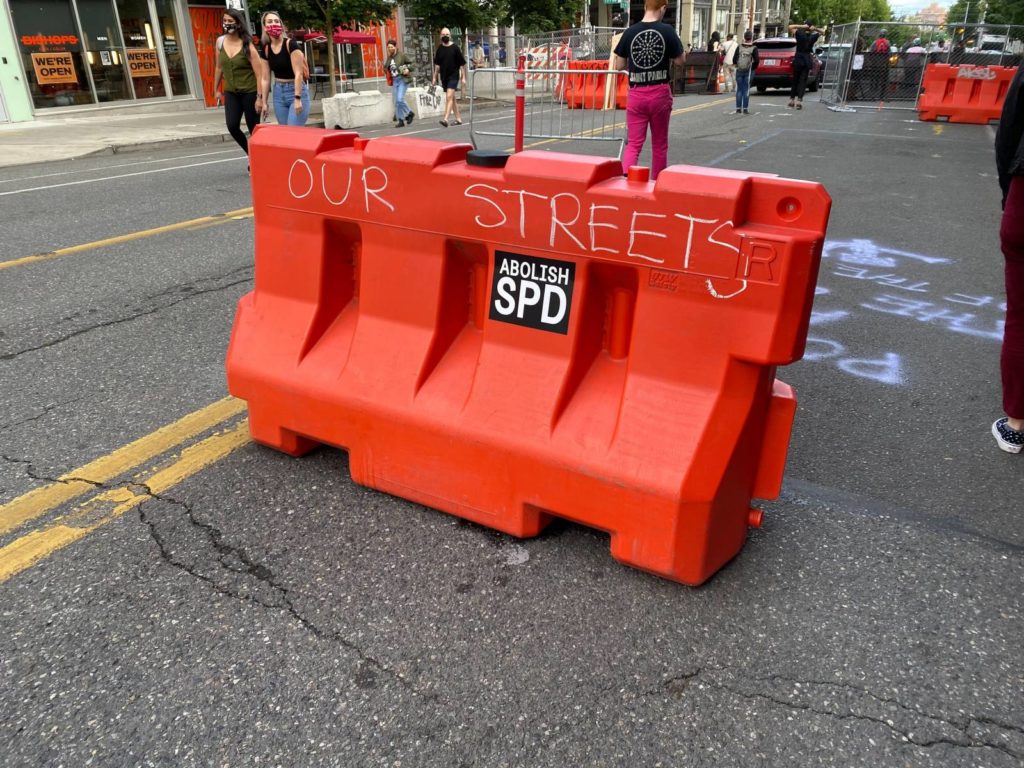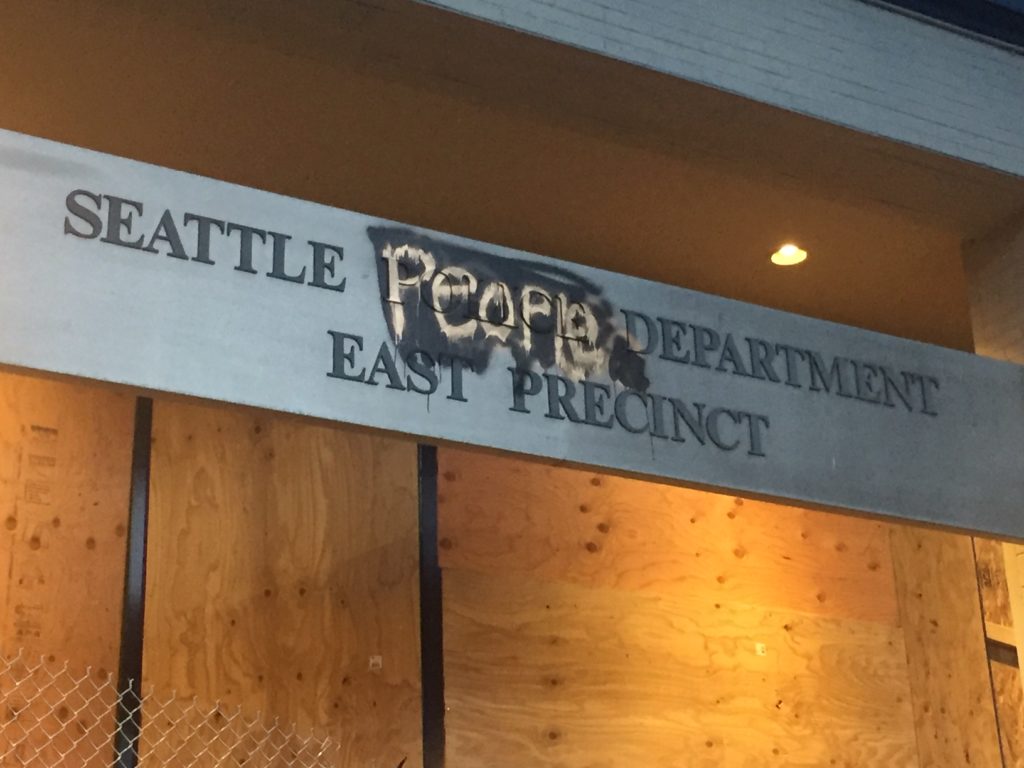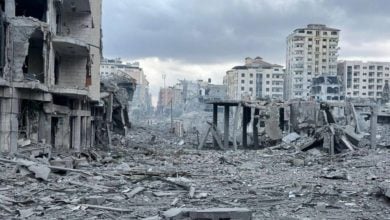Like nearly every other city and town in the United States, Seattle erupted in protests in response to the brutal police killing of George Floyd in Minneapolis. As also happened elsewhere, police responded to a protest against police brutality with more brutality. The first major protest took place on May 30; some 12,000 complaints were filed with a police watch-dog group regarding police abuse towards protesters including the use of pepper spray on a small child and cops kneeling on the necks of people being arrested.
Mayor Jenny Durkan declared a 5 pm curfew on May 30 while people were still at an organized rally; pepper spray, tear gas and flash bangs were repeatedly deployed; police engaged in provocative tactics including blocking many streets preventing protesters from getting to the rally site.
The next day, protesters assembled again and defied the curfew, marching from downtown to the neighborhood of Capitol Hill, a historic artist and LGBTQ neighborhood that has faced significant gentrification in recent years. Protesters tried to march to the East Precinct police station, but police and National Guard formed a line. A stand off ensued and protesters were eventually doused in tear gas and attacked with flash bangs, as documented on numerous livestreams.
Protesters determined to defy the curfew and maintain a round the clock presence, facing off with the cops and National Guard. It should be noted that the presence outside the East Precinct was not and is not the only form of action on the streets in Seattle; there are have been many marches and protests in different parts of the city as well in various suburbs.

On Sunday June 7, an armed man attempted to drive a car into the crowd at the intersection of 11th and Pine. Protesters chased the car and tried to erect a barricade but what saved countless lives was the heroism of a young Black man named Daniel Gregory who reached into the open window of the car and grabbed the driver, who shot Gregory in the arm. Gregory was treated on the scene by street medics and taken to the hospital; he has since been released. The gunman exited his car, brandishing his weapon and surrendered to the police at the barricades; he was taken into custody without so much as a scratch on his body.
Not surprisingly, tensions on the line with cops increased; despite the Mayor’s promise, teargas was again deployed that night.
The next day, protesters continued to face off and then, at one point, they just pushed through the barricade and entered into the zone in front of the police station. The police withdrew from the area and began evacuating the precinct building.
Thus came into being what has become to be known as the Capitol Hill Autonomous Zone or CHAZ.
Liberation News spoke to a protester who was part of the crowd that broached the barricade on June 8. She described how activists had called for white people to go to the front, and she joined the line directly behind three rows of people holding umbrellas after donning goggles that were being provided by a support team.
The next day the protester, who wished not to have her name used, told Liberation News: “People are camping there. There’s free food. It’s people who are realizing their power and it’s really special. I am glad I got to be part of starting it. I assisted today with repositioning barricades so they could get in the sound system. They want to do something with the building. Like a community center.”
Since the withdrawal of the police, the area has become a magnet for many. A sound system has been set up in front of the precinct building, now re-labeled “The Seattle People’s Department” and programming, open mics and documentary film showings are taking place.

The situation at the site is fluid; it would not be fair to try to categorize what is going on right now. Without a doubt there is a celebratory vibe and a feeling of temporary freedom from threat of police violence.
There are people of all nationalities. On one visit, this reporter observed an open mic night. As we approached the stage area we could hear a moving rendition of the AIM Song by Native singers, followed by an explanation of the song’s significance. This was followed by a Black trans man who spoke about the importance of protesters taking care of themselves mentally, physically and spiritually who led the crowd in breathing exercises. A young Black woman gave a talk in which she recounted a recent experience she’d had in which a white woman approached her sobbing, repeating the words, “I’m sorry, I’m sorry…”
The woman at the mic told of how she embraced the crying woman, and then told her “I need you to be strong and fight.” She ended her presentation again exhorting white people to move away from feeling guilty and instead “step forward.”
Activists in the Zone have articulated a set of demands. These are quite comprehensive in addressing the problems of police violence, systemic racism and the economic needs of the people of Seattle.
The Zone has come under significant attack verbally and in real life. President Donald Trump, not surprisingly, Tweeted about it. “Radical Left Governor @JayInslee and the Mayor of Seattle are being taunted and played at a level that our great Country has never seen before. Take back your city NOW. If you don’t do it, I will. This is not a game. These ugly Anarchists must be stooped [sic] IMMEDIATELY. MOVE FAST!”
Perhaps taking their cue from the President, the MAGA-hat and Proud Boy crowd have been skulking around the area. The armed extreme right in Washington state should be taken seriously, though so far they have not attempted a large-scale mobilization in Seattle since the uprising began.
The CHAZ is a unique development in Seattle because of the withdrawal of the police from the area. For many it provides real-life proof that humans do not need a repressive force to be able to live together and get along peacefully. That said, the CHAZ does need protection from outside forces that would sow violence and destruction and people are ready come to its defense.






